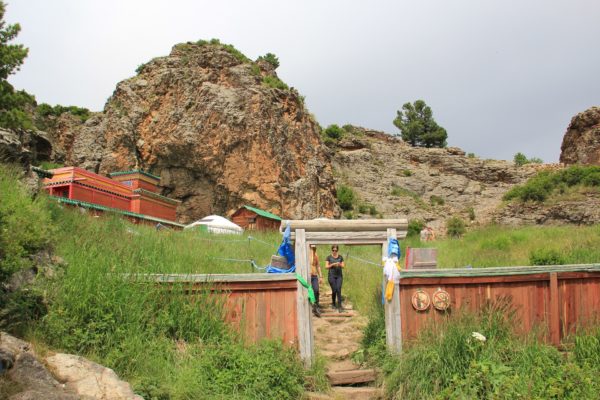Location
Tuvkhun Monastery is a historical and religious site located on a steep rocky plateau on top of a high mountain, surrounded by dense forests known as Alag-Ovoot or Shiveet-Ulaan. It is situated 40 km northwest of the center of Hujirt Sum and 50 km from the center of Bat-Ulziyt Sum, on the border of Ovorkhangai and Arkhangai Provinces in Mongolia. The monastery is a popular destination for tourists and pilgrims who are interested in exploring the unique natural landscape and rich cultural heritage of the area.
Creation Temple of Zanabazar
The monastery’s history dates back to 1648 when Mongolia’s First Bogd Zanabazar, at the age of 14, was fascinated by the natural beauty of the area and decided to build a small house with stone walls for meditation, which he named “dubhan” or “building house”. The word “dubhan” has now been extended and has become Tuvkhun. In 1686, while sitting at the monastery, the High Saint Zanabazar wrote Soyombo, a novel entitled “The Lover of the Highness of Adisted”, and created his idol “The hair of his head is growing”. He also made sculptures in a cave called “work” and read and wrote scriptures in a cave called “book”. On the rocks near these caves, there are traces of Mongolian boots (38 cm) and palm prints of the Zanabazar.
Abondened in war
After the Khalkh, Oirad War, the monastery was almost abandoned, but the congregation was revived in 1773, and from the time of Balganshadbidorj, the head monk of Erdenezuu Monastery, until 1939, the monks of Uyanga, the main circle of the Sain Noyon Khan province, came to hold the meeting in turn. There were 14 temples, including the Temple of Creation, the Eternal Flame, two stupas, and a drum shed. At the top of the 20-meter-high steep rock behind the monastery, there is a small cave called “mother’s womb,” where you can slide in and out. When a man crawls to the right, and a woman turns to the left and comes back out with her head, that person is purified and becomes as if born from a new mother. On the right side of it, there is an excavated rock called “cradle” where a standing person can stand.
Restoration
In 1967, the monastery building was surveyed and measured, the collapsed stone in front was repaired, and the old pedestrian passage was restored. The building of this monastery is unique in that it is assembled by Mongolian carpentry using various types of bricks. Tuvkhun monastery was taken under state protection in 1992, the work of the congregation was restored, and in 2001, funds from the state budget were used to restore it to its original appearance.








